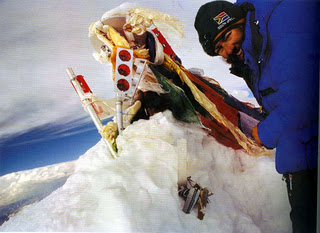"MT EVEREST" - SOME QUESTIONS TO BE ASKED BEFORE CLIMBING IT
1.WILL I MAKE IT TO THE TOP?
Of the hundreds of people that attempt to climb Everest each year, only about 30% succeed. The biggest problem is bad weather, which can trap climbers at Base Camp or force them to turn back.
2. DO I NEED TO BE FIT?
Yes, the route to the summit at 8,848 m (29,028 ft) is over rock, snow, and ice. However, age is no barrier. The youngest to make it was Jordan Romero 15,from America and the oldest was Yuichiro Miura, 80, from Japan.
| JORDAN ROMERO |
| YUICHIRO MIURA |
3. HOW LONG WILL IT TAKE?
It is impossible to predict, but, from Base Camp, four days up and four days down is reasonable. The fastest ascent was by Italian Hans Kammerlander, who got to the top in 16 hours and 45 minutes.
| HANS KAMMERLANDER |
4. WHAT SHOULD I TAKE?
What you take up, you must bring down, so take only the bare essentials. There's an estimated 50 tonnes of rubbish on Mount Everest, made up of equipment and supplies left behind - much of it at Base Camp.
5.WILL IT BE COLD?
The temperature at the summit averages -36 degrees C(-33 degrees F), but can drop as low as -60 degree. This can freeze the skin, causing frostbite. Toes are the first to suffer, so warm socks are essential.
6. WHAT IS SNOW BLINDNESS?
This is when snow reflects the Sun's rays and it burns the back of the eyes so you can't see. Sun goggles are essential. They absorb the harmful UV rays.
7. WHAT IS ALTITUDE SICKNESS?
Above 3,660 m oxygen levels drop by 40% and most climbers gasp for breath. To avoid serious symptoms they need to breathe
from oxygen cylinders.







